Aluminum material: aluminum material, generally aluminum is used for appearance parts, such as the keyboard of notebook or netbook, some other accessories, etc.;
Galvanized sheet: It is a zinc layer coated on the surface of cold-rolled sheet, commonly known as galvanized sheet. Galvanized sheets include SECC, SGCC, etc., and galvanized sheets are rust-resistant and corrosion-resistant. The price is relatively high. The common plate thickness is 0.4~3.2mm. Its features are excellent paintability, good fingerprint resistance, good corrosion resistance and maintains the processability of cold-rolled sheets. Generally, the thickness of the case and the lower cover is 0.80mm SGCC material. Medium hardness, slightly harder than aluminum, slightly softer than stainless steel. The SGCC material is relatively hard, and its tensile properties are not very good. If this material is used for stretching, the die and punch must be polished very brightly, otherwise it is easy to crack and crack.
Stainless steel: It can be used to produce shrapnel and appearance parts of various sizes. For example, the shrapnel inserted into various interfaces at the back of the desktop computer case is made of stainless steel and then produced through stamping dies. The material of stainless steel is relatively hard. Sometimes the gasket cannot be found in the mold maintenance, and the stainless steel material can be used for emergency. The punch and knife edge of the stainless steel mold need frequent maintenance to ensure the smooth production of the mold. Otherwise, mold repairs are often required. Ha ha.
Generally, the gasket needs to be placed on the part with a spot welder, otherwise it will be more troublesome if it falls off when the mold is removed next time. Some factories do not allow the use of gaskets. At this time, you can use welding to burn them up, and then use a grinder to grind them out to the required size.
Commonly used stainless steel materials are SUS301, SUS304 and so on. SUS200 series (including 201, 202, etc.)
SUS300 series (including 301, 304, 310S, 321, 316L, etc.) and
SUS400 series (including 409, 410, 420J1, 420J2, 430, 436L, 444, etc.)
Tinplate: Tinplate? Are you a little dizzy? At that time, I heard the master in the factory say that it was tinplate, and I also mistakenly thought it was "mokou iron". wrong. In fact, I can't tell the difference, anyway, the pronunciation is ‘mokoutie’. Simply think that it is mottled iron! The ductility of mottled iron is relatively good, the hardness is not high, and it is relatively soft. Generally, mottled iron material is suitable for stretching more complicated curved surfaces, and it is not easy to crack. Such as the upper cover. Some small shrapnel etc.
Tinplate, where Sn is the coating, tinplate is also called tin-plated iron. Tinplate is a common name for electroplated tin sheet steel. Tin mainly plays a role in preventing corrosion and rust. It combines the strength and formability of steel with the corrosion resistance, solderability and beautiful appearance of tin in one material, which has the characteristics of corrosion resistance, non-toxicity, high strength and good ductility.
What is pitch? What does pitch positioning mean?
Pitch, as the name suggests, refers to restraint, and "pitch" refers to control distance. Then the pitch positioning means positioning by controlling the distance. Control the feeding distance to avoid over-feeding, mis-feeding, damaging the mold, or producing defective products.
In stamping dies, pitch positioning is generally used in continuous dies.
People who know it will say: "Nonsense, how can engineering molds be used for pitch positioning?" 。
Why only continuous molds use pitch positioning, but engineering molds generally do not use pitch positioning?
That's because the general engineering molds are made of blanks, and the size, length and width of the blanks are almost the same, just put them directly into the engineering molds and punch them, otherwise they wouldn't be called "engineering molds"; of course, engineering molds also have For automatic feeding, the feeder is generally set up, and the punch will be punched, and the feeder will automatically send the material.
The continuous mold generally has a special automatic feeding machine, otherwise how to make it? Manual feeding Because sometimes the feeding is not accurate, the product scrap rate is too high, and the automatic feeding machine can avoid this risk. Moreover, only ordinary small factories use manual feeding, and slightly larger factories are arranged to have automatic feeding machines. Manually only need to place the material on the automatic feeder according to the requirements, and then set it up.
However, the automatic feeder may not be so accurate, and sometimes there will be a small error. At this time, the pitch positioning plays a very important role. Some people say "pitch positioning: the distance between two positioning pins." Think about it, right? In fact, this statement is not wrong, in theory it is so. But what is the distance between the two alignment pins? How is it calculated? Haha, this question is too profound, you can ask a master who specializes in hardware mold design.
Let me give a picture below to briefly talk about what pitch positioning is.
Among them, the blue area is called the material belt, and then there are two red circles, which are the positions of the knife punch. I will not talk about the knife punch here. I will write a blog next time when I have a chance. Let's talk. This time the main discussion is pitch positioning, okay, let’s continue. There is a pitch positioning block here, let's call it pitch positioning for short, because we often say that in mold making, such as "Where did you put the pitch positioning?" "Do a pitch positioning Let’s go.” The pitch positioning here refers to the block of pitch positioning.
Pitch positioning is usually installed on the lower mold, where the strip first comes in, and the strip first enters from the beginning of the continuous mold, and then punches two holes (positioning holes), then passes through the tool setting place, and passes through the tool setting process. place, cut the edge here, cut off a part of the material tape, and then block the material tape through pitch positioning to prevent misfeeding.
Notice the two red circles? what is that? Why circle it? think about it.
In the first red circle, there is a small gap there, why should there be a gap in this place? without cutting at a 90° right angle? think about it.
Because what's behind it? The back is pitch positioning. Pitch positioning is generally made at right angles here. Think about it, what if the front cutting edge is also a right angle here?
The cutting edge is right angle, so the punch must also be made at right angle, because the right angle is a sharp angle, and the material of the general punch is very brittle, although the hardness is very high (the higher the hardness, the more brittle, I don’t know if I say this Correct, don't mislead you! .
It is very brittle, and it is easy to break. After many times of production, the small sharp corner on the front may disappear. Is it still cut at 90 degrees at this time? Even if it is 90 degrees, there will be a lot of burrs, and it will be uncertain when it comes to pitch positioning, and the printed products will have errors . Do you know now? Why is there a small gap there?
What is Jump Scrap? What does skipping mean? Maybe some students don’t understand, so let’s talk about it first.
Jumping waste and jumping chips basically mean the same thing, that is, the waste jumps up, onto the lower template, or jumps to other places. In short, the waste jumps out from the edge of the knife.
The punch cuts off the excess waste, and then some waste that has been cut may jump out from the edge of the lower die due to the reason of the mold repair personnel, designers, or production line personnel. Think about how dangerous this is one thing.
It is terrible to think about a few products being scrapped, a mold that may be damaged if it is serious, and people may be injured if it is very serious. This is the case with making molds. Because of carelessness in making molds, many people lose their hands or become disabled. Unless you do mold design, or something else. As long as you deal with molds, danger is everywhere!
Let's analyze the reasons for the jumping waste caused by the lower stamping die, and the defense methods.
1. Influenced by the shape of punching waste or blanking parts, if the shape is too simple and the weight is too light, it is easy to be brought up by the punch;
2. Due to the magnetic force, the punch or knife edge is magnetic, which is magnetic in itself, and the magnetism caused by grinding and impact changes, etc., are easy to absorb waste materials, especially materials related to iron, such as tinplate, SECC , SGCC, etc., the mold parts of these materials must pay attention to demagnetization, otherwise the mold will always jump chips, and people need to repair the mold in the past. What an annoying thing this is;
3. The influence of blanking gap, small or large gap may cause burrs to return to the surface of the mold with the punch, insufficient processing accuracy, and the influence of processing errors.
4. The impact of punching speed, if the speed is too fast, it may cause the punch, the inner wall of the knife edge and the waste to form a piston, resulting in the phenomenon of vacuum adsorption, that is, the punch sucks the waste from the lower die knife edge. In this way, you can make the design dig a small hole in the middle of the punch, and make corresponding grooves on the backing plate to allow air to circulate without causing vacuum adsorption. Or make the cutting edge of the punch into a different plane, the possibility of adsorption will be smaller if it is not a plane, as shown in the figure:
5. The selection and dosage of cutting oil are improper, too much oil is added, or the added oil is too sticky, and the waste is adsorbed on the punch and cannot fall off, resulting in chip skipping;
6. The sharpness of the cutting edge of the concave and convex die is too sharp, there are many bright bands and few burrs, the friction with the cutting edge of the concave die is small, and it is easy to be absorbed by the punch; of course, in this case, you can only think of other ways to repair it. The mold is broken, it is impossible to start from the knife-edge punch.
7. The length of the punch is affected. Generally, we say that the length of the "punch" for punching is equal to: the thickness of the splint + the thickness of the stopper + the thickness of the stripping plate + the thickness of the material + (1 ~ 2) two millimeters, as long as it meets this The length is fine, but if it is too long, the material will start punching before pressing the punch, which will easily cause the edge of the punch to wear out. Is it too short? The waste is not completely flushed into the slope or small step difference below the knife edge, and it is easy to jump up.
8. The reason for the cutting edge of the lower die, because the cutting edge of the lower die generally has a slope or a step difference, the general slope is 3~5°, and it is considered comprehensively according to the actual needs and the strength of the mold. Too much grinding will cause the blanking gap to increase, resulting in chip skipping;
9. Other reasons, such as: foreign matter sticks to the material and is brought into the mold;
10. If the punch is big enough and strong enough, you can also dig a hole in the middle, lock the screw behind the buttocks of the punch, stop screw + spring + ejector pin, push the waste down, and the ejector pin is higher than One or two millimeters on the surface of the punch is fine, too long may deform the top of the product.
11.You can also use 502 on the front of the punch to dip a little glue on it, or burn a lump of solder and weld a small spot on it. Of course, this requires a big enough punch and good welding skills, otherwise the punch will be burnt out. , has an effect on the punch strength.
Product Quality Analysis of Stamping Die Stretch Parts
In the process of product stretching, the main problems of stretched parts are: wrinkling, cracking, uneven thickness, surface scratches, shape distortion, spring-back, etc. Among these phenomena, wrinkling and cracking have the greatest impact on product quality. Products with these two problems will definitely not be delivered and must be adjusted. Generally, products with these two problems can only be scrapped, and customers will not need.
1. Wrinkling
During the stretching process of the material, due to excessive tangential stress on the surrounding edges, the material loses stability, causing the product to form uneven wrinkles along the tangential direction of the edge, which is called wrinkling.
When the wrinkling is serious, it will also cause the material to be difficult to pass through the gap between the die and the punch during the stretching process, increasing the stretching deformation force, and even causing cracking.
The occurrence of instability depends not only on the magnitude of the tangential stress at the edge of the material, but also on the thickness of the stretched part.
Generally speaking, it is better to use nitrogen springs or Youli glue for stretching dies, and it is less prone to wrinkling and cracking. why? Because the force of nitrogen gas spring or uniglue is generally relatively balanced, there will be no problem of uneven force.
Nitrogen gas springs are better than Uniglue, because nitrogen springs are powerful and well-balanced, but the price is many times more expensive than Uniglue, and many factories can’t afford it. Generally, only slightly larger factories have it. Money uses nitrogen gas springs.
After a long time of use, the Uril glue will shrink, and its strength will not be as strong as before. It must be replaced with a new one, but its price is much cheaper than that of nitrogen gas springs.
To prevent wrinkling, edge holders can be used. In some places, they are called binder ribs. They all mean the same thing, that is, to put a circle of raised ribs around the material without affecting the subsequent process of the product, commonly known as binder ribs. , Press the material around. The advantage of this is that the stretched product will be fuller and it can also prevent wrinkling.
The blank holder force needs to be adjusted relatively during the mold test. Generally, the design is not so reasonable, and the height of the binder rib needs to be adjusted appropriately according to the manufactured product. If the blank holder force is too large, the friction between the material, the die and the blank holder ring will increase, and the wall of the material will become thinner or even cracked; if the blank holder force is too small, it will not be able to effectively prevent wrinkling .
The second problem is cracking, which is a problem often encountered in the stretching process.
When the tensile stress on the cylinder wall exceeds the strength limit of the material, the product will crack, and the crack generally appears on the cylinder wall slightly above the rounded corner of the punch.
The factors that affect the cracking of the product are: the tensile properties of the material, the diameter and thickness of the material, the drawing coefficient, the fillet radius of the concave and convex die, the blank holder force, the friction coefficient, etc.
If the fillet radius of concave-convex mold is too small and too sharp, the product will be easily cracked. The general mold repair method is to find a way to increase the fillet, make the fillet smoother, and polish it a little. It is really impossible. You can also add oil during production, especially the special oil for stretching, which is very effective.
When designing a stamping die, you can try to increase the fillet as long as the customer's product requirements allow, and don't make it too sharp. Some designs are not well understood, and the designed drawing die cracked very much during the test die. Great, I want to exhaust the fitter to death! Model repair is annoying.
When stretching, the necessary lubrication is used, which is conducive to the smooth progress of the stretching process and the thinning of the cylinder wall is improved. But it must be noted that the lubricant can only be applied on the working surface of the die, and the contact surface between the punch and the material must not be lubricated, because there is favorable friction between the punch and the surface of the blank, which can prevent the material from sliding and pulling. cracking and thinning.
Each part of the stamping die must first go through these procedures:
First of all, we have to cut the material. How can we proceed to the next step of processing without cutting out the material. Cutting, that is to say, rough machining. Generally, a template must first be roughly planed by a planer, and then rough-grinded and rough-machined by a large water mill (grinder, also known as a large grinder), leaving a certain margin (usually 50 margins, and the accuracy requires plus or minus ten). It’s ok), and then heat treatment is required. After the heat treatment is completed, after finishing with a large grinder, the accuracy is required to be higher at this time. For example, the thickness of the template is 25.00mm, then the accuracy requirement must be within plus or minus 0.01mm within. Depending on the function of the template, it doesn't matter if there is a difference of one or two, as long as the printed product has no mold marks.
After the grinding machine is processed, it is sent to put the threading hole, then wire cutting, and then milling machine, CNC, etc. .
If it is a small part, it is like this: according to the size of the part, use a sawing machine to saw, or use a milling machine to mill, grind it with a grinder after roughing, and cut off the excess cutting pieces. (also known as high-speed milling machine) processing, if you need to discharge, put it away. After the completion of the quality assurance measurement.
Generally speaking, they are planers, lathes, milling machines, drilling machines, and grinders. These are the mold fitters who must be proficient in operating them. However, now slightly larger factories basically do not use planers and lathes, because they are all processed by special personnel. , you don't need to worry about it at all. Apart from planers and lathes, what other processing equipment must be mastered by fitters?
Since making a set of stamping dies requires so many processing equipment, what about repairing the dies? Why should the mold be repaired?
Because it is broken, the product cannot be produced; why is it broken? Because the designer's design is unreasonable, or the mold production time is long, the technical problems of the mold repair personnel, or the carelessness of the production line personnel, etc.
What are the main things to repair the model?
If it is broken, repair it. For example, if the material does not come off, it may be that the spring force is not strong enough, and the design of the stripping parts is unreasonable. At this time, it may be necessary to replace the spring, or increase the spring, or improve the stripping structure, increase the ejector pin, etc. , then you need to use a drilling machine to drill holes, or a milling machine to drill holes and countersink, and you may also use welding, then you need to be able to operate arc-arc welding machines, burn argon arc welding, etc., and you may need to grind and mill after burning wait.
The general mold stripping plate does not have a pressure groove. For example, the general engineering mold does not have a pressure groove, but why does the continuous mold need to design a pressure groove? Why does the engineering mold not need a pressure groove?
Why does the engineering mold not need a pressure groove? This is because the material stamped by the engineering die is generally thicker, rougher, and less precise, and there is no need to punch a strip as long as the continuous die, and the engineering die is also relatively small, the size of the template is not as long as the continuous die, and the size required by the product The precision is not as high as the continuous mold, and it is easier to repair and debug, so the engineering mold generally only needs a limit column, and does not need a pressure groove. For the continuous mold, it needs to complete mass production, and the product precision is higher than that of the engineering mold, so the precision requirements for the mold are relatively high, and the pressure groove is just a way to improve the precision of the mold. Therefore, the continuous mold generally uses the pressure groove and the limit column to control the gap of the product strip in the mold.
Why does the continuous mold need to design the pressure groove? Because when the stripper plate of the continuous mold is in contact with the lower formwork and presses the material, strong pressure does not mean that the material can be completely pressed down, so generally there will be a gap of 0.05mm or less on the stripper plate of the continuous mold and the surface that contacts the lower formwork. The 0.08mm deep pressing groove (can be adjusted according to the thickness of the material), commonly known as "pre-pressing", the width is just a little wider than the material tape, to ensure that all the materials are pressed inside, so as to ensure that the material tape is in the mold when cutting The gap in the middle is uniform, so that the mold can fully press the material when cutting, and prevent the punch and knife edge from being worn due to uneven pressing, and the bright belt is not neat, etc.
Note: Because the pressure groove and the limit column are used together to control the gap between the product strip in the mold, and the stripper plate is designed with a pressure groove, so when designing the limit column (some places are called the height limit column, That is, the height-restricted pillars.), and the pre-compression depth should also be taken into consideration, so as to reduce the adjustment time of the fitter when setting the mold and speed up the progress of the mold.
For example: the thickness of the product material is 0.20mm, and the pressure groove of the stripper plate can be designed as 0.05mm, then the height of the limit column on the lower formwork can be designed as: the thickness of the lower formwork + (0.20mm-0.05mm), if the thickness of the lower formwork If it is 25.00mm, then the height of the limit column on the lower formwork can be designed as: 25.00mm+(0.20mm-0.05mm)-0.03mm strong pressure=25.12mm, so it is ok, and it is almost enough to leave 0.03mm for strong pressure. If the height of the limit post is designed to be 25.15mm, there will be no strong pressure at this time, which is unreasonable. It is better to leave a little strong pressure, 0.03mm is enough.
What is the use of the continuous mold foot pallet?
The feet can be divided into lower feet and upper feet; the pallets can be divided into lower pallets and upper pallets.
The main functions of the footing plate of the continuous mold are: supporting and fixing the mold, resisting compression and shock absorption, prolonging the life of the mold, increasing the height of the mold, and facilitating the mold (that is, installing the mold on the punching machine), and the lower foot and the lower pallet are also convenient. Eliminate the role of waste.
What is the use of the continuous mold foot pallet? In fact, these things are basically useless, so don’t use them if you can, because there are still mold bases.
When the formwork is convenient, the upper supporting plate and the upper foot can be omitted, that is to say, the upper foot and the upper supporting plate are not required. As long as the formwork is convenient, the formwork groove can be designed on the mold base, so that some savings can be made. Materials, reduce unnecessary waste, and save money for the company.
But pay attention: For molds that need to be blanked, pay attention when ignoring the lower pallet and the lower pad, because the lower pad and the lower pallet also have the function of conveniently removing waste, don’t forget it, if something like this happens The mistake caused the mold to have nowhere to drop the material, but it would be laughed out of the mouth by others.
Under the premise that blanking is not affected or blanking is not required, it is convenient to set up the mold, and other performances of the mold will not be affected, the lower feet and the lower supporting plate can be omitted. Because you don't need it, of course you don't need it.
The stripping plate is a common name for the stripping plate. The code name of the upper mold stripping plate is abbreviated as PSU. On the stripping plate is the stop plate (PPS), and then the splint (PHU), backing plate, etc. Of course, there are not only upper strippers but also lower strippers.
What is off-board? What is the function of stamping die stripper?
"Take off", of course, does not mean stripped off. There is nothing wrong with stripping off this understanding. The stripping here really refers to the meaning of stripping and stripping, which means to remove the material or product from the mold, commonly known as "stripping". When repairing mold problems, we often encounter the problem of "no material falling off", such as "xx mold is not falling off, go and repair it!", which means that the product sticks to the top and bottom of the mold and cannot come off.
What is the function of stamping die stripper? Of course, the first function is to remove the material, that is, to remove the product from the mold. Do you think it has other functions? What does it look like when the mold is closed?
To sum up, there are two functions of stamping die stripping, one is to strip the material and release the product; the other is to press the material, to press the material for bending, punching and other processes.
The components that constitute a relatively complete die generally include: templates, inserts, and standard parts;
The template includes: upper and lower pallets, upper and lower feet, upper and lower mold bases, upper and lower templates, upper and lower backing plates, upper and lower splints, stoppers, stripping plates, dies, punches, also known as punches or knife edges wait;
Inserting block (upper die): inserting splint, stripping plate, punch, etc.;
Block entry (lower die): block entry of the lower die, knife edge of the lower die, floating blocks, positioning inserts, etc.;
Standard parts: spring, hexagonal screw, stop screw, wire spring, contour sleeve, guide post, guide sleeve, contour sleeve gasket, dual-purpose pin, ejector pin, etc.;
Non-standard parts: outer positioning, inner positioning, pitch positioning, outer limit column, inner limit column, etc.;
Precautions:
Usually pay attention to safety and don’t put anything in the mold casually. Do not put wrenches, scissors, other tools, etc. in the mold. After the mold is repaired by a mold repairer (technical term: mold repair), you must Take a good look and see if they have forgotten anything in the mold. Of course, ordinary mold repairers will not make such mistakes, but you should also pay attention. Don’t break the mold, or hurt your body or hands. Remember to be safe when doing this. If you forget to take out the contents of the mold, the punch may break the mold. In case of things inside If it flies out? People may also be injured.
Sometimes when the forklift is forking the mold, the fork is not good, and the mold falls. At this time, don’t use your hands to support it. Keep it far away. If the mold is broken, it’s okay, don’t hit people; Be careful to stay away from the mold, and be careful that it will be bad if the mold shakes and touches.
Working in the mold industry or dealing with molds is often prone to accidents. Newcomers should pay special attention to these safety matters when entering the factory.
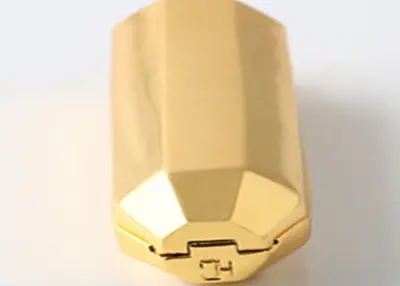 Exploring Chameleon PVD Coating in DesignJanuary 5, 2024The world of design is constantly evolving, with new techniques and materials pushing boundaries and inspiring creativity. One such innovation that has revolutionized the design industry is Chameleon ...view
Exploring Chameleon PVD Coating in DesignJanuary 5, 2024The world of design is constantly evolving, with new techniques and materials pushing boundaries and inspiring creativity. One such innovation that has revolutionized the design industry is Chameleon ...view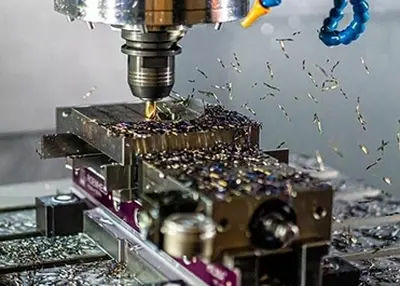 What is a CNC Machine?October 20, 2023The full name of CNC is Computer Numerical Control, and a tooling machine with a computer as the control center is called a CNC machine. The traditional tooling machines need to be manually operated to achieve a variety of metal processing techniques, CNC machine is by the engineers of the computer input product drawings, complete the product required tooling sequence, processing environment parameters and other data, by the computer according to the above instructions for automated production.view
What is a CNC Machine?October 20, 2023The full name of CNC is Computer Numerical Control, and a tooling machine with a computer as the control center is called a CNC machine. The traditional tooling machines need to be manually operated to achieve a variety of metal processing techniques, CNC machine is by the engineers of the computer input product drawings, complete the product required tooling sequence, processing environment parameters and other data, by the computer according to the above instructions for automated production.view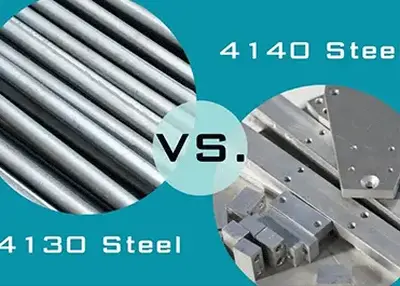 4140 vs 4130 Steel: A Comparison of Two Common Alloy SteelsNovember 27, 2023Steel is one of the most widely used materials in various industries, such as construction, automotive, aerospace, and manufacturing. Steel has many types and grades, each with different chemical compositions and mechanical properties.view
4140 vs 4130 Steel: A Comparison of Two Common Alloy SteelsNovember 27, 2023Steel is one of the most widely used materials in various industries, such as construction, automotive, aerospace, and manufacturing. Steel has many types and grades, each with different chemical compositions and mechanical properties.view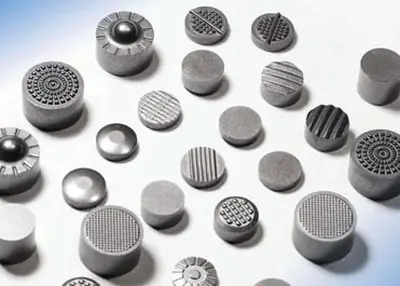 Alloy Steel vs Carbon Steel: Which Is Better?September 5, 2023Steel is a major global industry that involves the combination of iron with other elements, both metallic and non-metallic, to create a versatile material. This combination is done to attain specific ...view
Alloy Steel vs Carbon Steel: Which Is Better?September 5, 2023Steel is a major global industry that involves the combination of iron with other elements, both metallic and non-metallic, to create a versatile material. This combination is done to attain specific ...view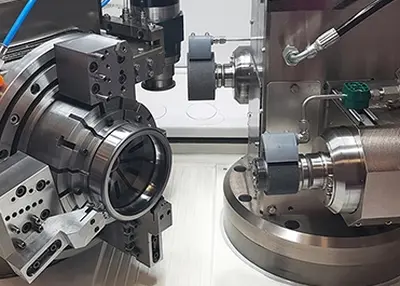 What kind of process is suitable for machining different types of parts?October 31, 2023Machining is a widely used manufacturing process and is one of the common machining methods used in the manufacturing industry for making different types of parts. Different types of parts require dif...view
What kind of process is suitable for machining different types of parts?October 31, 2023Machining is a widely used manufacturing process and is one of the common machining methods used in the manufacturing industry for making different types of parts. Different types of parts require dif...view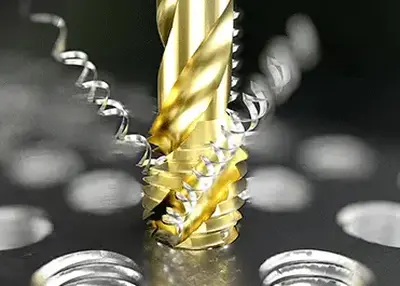 Exploring the Precision and Efficiency of CNC Tapping in MachiningNovember 22, 2023Precision in machining isn't just a goal; it's the essence that defines excellence. Within this realm, CNC tapping emerges as a beacon of accuracy, revolutionizing how threads are crafted and machines function. Let's delve deeper into this intricate world to uncover the precision and efficiency it offers.view
Exploring the Precision and Efficiency of CNC Tapping in MachiningNovember 22, 2023Precision in machining isn't just a goal; it's the essence that defines excellence. Within this realm, CNC tapping emerges as a beacon of accuracy, revolutionizing how threads are crafted and machines function. Let's delve deeper into this intricate world to uncover the precision and efficiency it offers.view